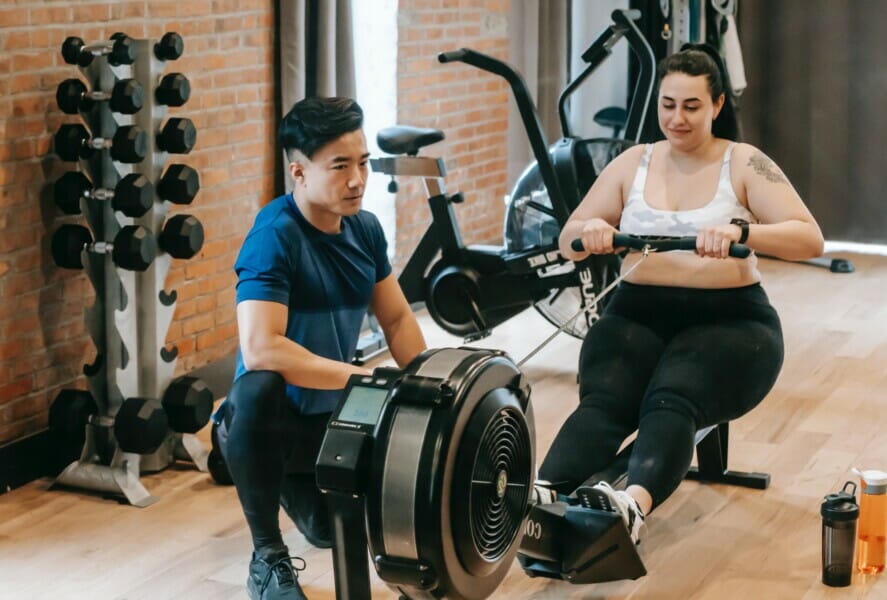Common Questions People Ask Personal Trainers
Looking to enhance your physical appearance and improve your fitness? Personal trainers, fitness models, and nutritionists can provide valuable guidance, yet many individuals opt for questionable advice from unreliable sources. Here are some frequently asked questions that personal trainers often address:
What Do You Need to Know Before Starting Running? Is It Harmful?
Running has gained popularity, leading to misconceptions about its potentially damaging effects, particularly on the knees. The risk of harm arises when individuals disregard proper training guidelines and approach running incorrectly.
The impact of running on one’s health depends on various factors such as age, muscle strength, body condition, weight, footwear, injury history, running form, and training frequency. It is crucial to tailor the running intensity to your individual fitness level to prevent injury.
When done correctly, running offers numerous benefits to cardiovascular health and joint strength. Research indicates that regular runners live longer and have a lower risk of premature death compared to those with a sedentary lifestyle.
Before embarking on a running regimen, consider these essential steps:
- Undergo a comprehensive assessment by a sports medicine specialist to evaluate your physical readiness for running and mitigate injury risks.
- Select appropriate running shoes and gear that provide adequate support and cushioning to minimize impact on your joints.
- Engage in functional training exercises to strengthen core muscles and enhance overall fitness for running.
- Seek guidance from a coach to improve running technique and reduce the risk of injury.

How Can You Build Muscle Without Supplements Like Protein and Creatine?
Effective muscle gain relies on a combination of regular strength training, a balanced diet, and adequate recovery. Here are some tips for muscle building without relying on supplements:
- Always begin with a proper warm-up before your workout to prevent injury.
- Incorporate bodyweight exercises to activate muscle fibers and increase density.
- Perform weightlifting exercises focusing on 8-12 reps with 70-80% of your maximum load to stimulate muscle growth.
- Pay attention to your nutrition by consuming a balanced ratio of proteins, carbohydrates, and fats to support muscle growth.
- Prioritize recovery to allow for muscle fiber growth and regeneration, limiting training to 3 times per week.

Which Is Better: Crossfit or Traditional Weight Training?
The choice between CrossFit and weight training depends on individual goals and preferences. Here’s an overview of both options:
Traditional Weight Training focuses on muscle development through isolated exercises, suitable for those aiming to build muscle mass or target specific areas.
CrossFit offers high-intensity workouts targeting overall fitness, endurance, and calorie burning, making it ideal for individuals seeking a diverse exercise routine.
Ultimately, the choice between the two depends on personal fitness objectives. Beginners should exercise caution with intense CrossFit workouts to prevent injuries.

Image by Leon Ardho
via Pexels

How To Lose Weight Without Losing Or Even Gaining Muscle Mass?
Initially, losing weight and gaining muscle mass may seem conflicting. To lose weight, a caloric deficit is needed, whereas building muscle requires consuming more calories to fuel muscle growth.
However, it is achievable to burn fat without sacrificing muscle mass through a process called recomposition. This method involves a specific diet and exercise regimen. One popular approach to body recomposition is the “cyclic” diet.
The concept involves alternating days of low-carb eating with days of consuming carbohydrates. On workout days, you provide your body with surplus calories, while on rest days, you reduce caloric intake, maintaining a slight deficit.
Here are some tips for succeeding in this process:
- Incorporate more protein-rich foods into your diet and pay attention to your water intake.
- Adjust your workout routine: Avoid pushing yourself to the limit and focus on strength training with weights and fewer repetitions.
- Regularly track your progress and modify your diet and exercise plan based on your results.
- Monitor your weight and body composition. If you notice weight gain without muscle definition, reduce carb intake on workout days. If weight increases but body shape remains favorable, maintain your current diet as the gain may be muscle mass, not fat.

How Do You Keep Fit If You Work From Home And Spend A Lot Of Time Sitting?
Plan short breaks throughout the day to engage in physical activity. Having basic equipment like a mat and dumbbells can facilitate a complete home workout. Prior to exercising, warm up by targeting various body parts starting from the neck.
Perform a simple full-body workout routine including squats, lunges, push-ups, core exercises, and deadlifts with an appropriate weight to engage back muscles. Gradually increase intensity by incorporating advanced variations and additional weights. For instance, progress to side lunges, weighted squats, close-grip push-ups, oblique exercises with weights, and a boat pose for back strength.
Moreover, explore online workout programs suitable for home workouts. Many fitness centers, streaming services, and sports brands offer a variety of free and paid video content to cater to different preferences for home exercises during quarantine.
You can easily select a workout regimen that suits you, download a home workout app, or access sports-related video content on your TV to follow along and stay active at home.
Featured Image by Andres Ayrton via Pexels














